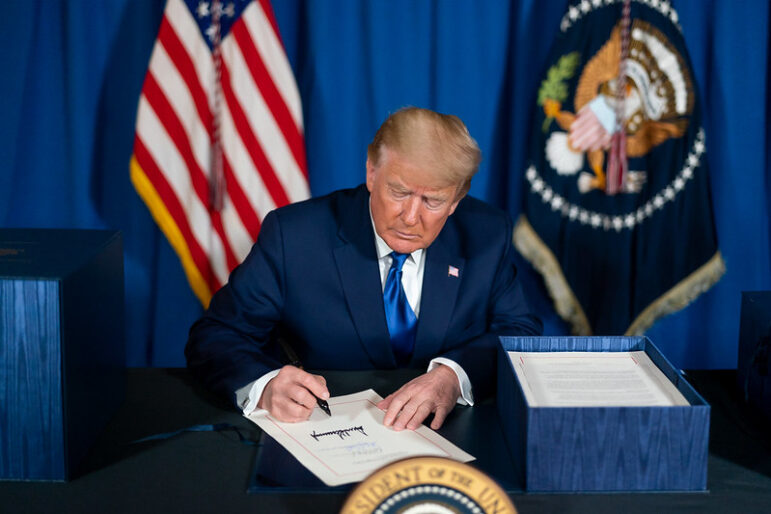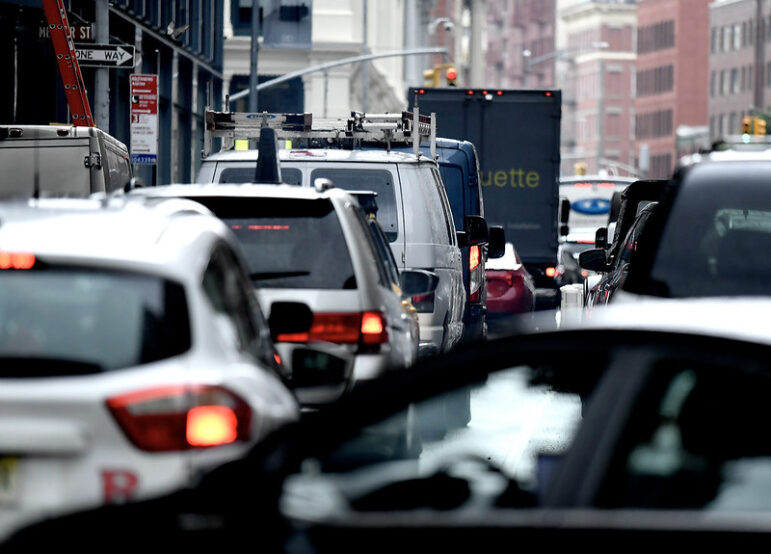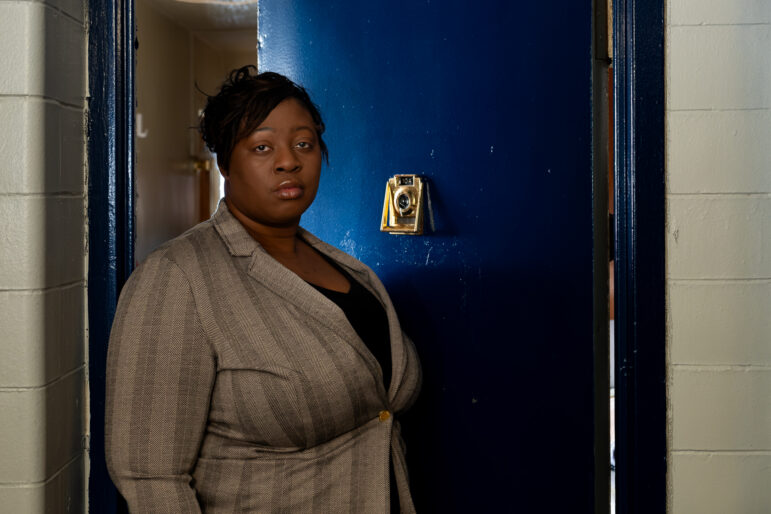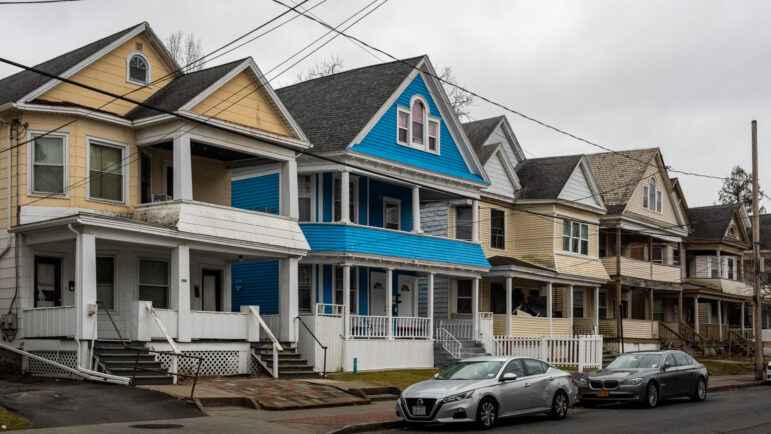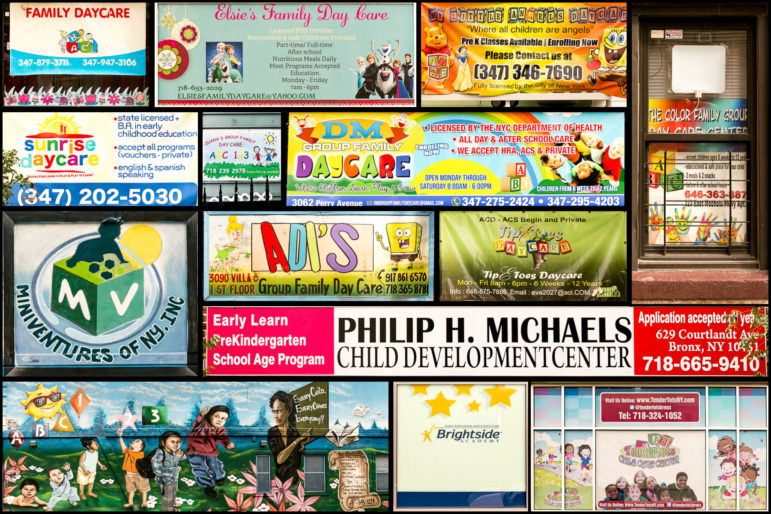
Adi Talwar
The maze of childcare options confronting parents in one section of the Bronx. Daycare and childcare in the city is covered by a patchwork or oversight agencies and regulations, or the lack thereof.
After a legislative committee failed to approve a law to give the state significantly more power over certain city-registered daycare programs, Gov. Cuomo recently unveiled a set of “emergency regulations.” The amended rulesgive the Office of Children and Family Services, at least temporarily, more leeway to act in cases of “egregious violations”—or health and safety issues—at state-licensed daycare facilities. And a new state law passed last month will require the 2,300 daycares registered with the city’s health department to post “performance summary cards” at their entrances.
What these reforms do not address, however, are the approximately 24,000 providers in the city “legally exempt” from both city and state licensing, but “enrolled” with the state to receive day care subsidies awarded to parents, according to 2015 statistics. They account for about half of the providers enrolled in New York City last year. Yet almost no information about legally-exempt providers is made public. Neither the performance summary card law nor the Cuomo regulations will apply to this category of care.
The state’s Office of Children and Family Services (OCFS) says it is working to implement new federally mandated regulations statewide, including “extended background checks” for legally exempt providers. And some safeguards, it says, are already in place.
“Legally-exempt providers enrolled in the child care subsidy program are exempt from the regulations under which licensed and registered child care providers operate, but they are not exempt from all oversight,” according to Janice Molnar, OCFS Deputy Commissioner for Child Care Services.
Oftentimes they are family child care providers—friends, family and neighbors providing “informal care in their homes to no more than two unrelated children.” And they already are screened to see that they meet “basic health and safety” standards, she says.
But John Pinkos, director of the childcare division of the Day Care Council of New York, contends that those standards are so minimal, it hardly matters. “There’s no expertise, there’s basically no monitoring,” Pinkos says.
Even at licensed facilities which are given initial and annual inspections, violations—including public health hazards—are common.
At legally exempt programs, parents are responsible for making sure their children are in good hands.
A City Limits investigation found that:
- Complaints and violations lodged against the majority of legally-exempt providers are not available in the state’s online database for licensed daycares, and are also not listed on the city’s website. Only parents whose children are already enrolled with a provider get mailed notification of infractions at a site, according to a spokesperson for The Women’s Housing and Economic Development Corporation (WHEDco), the non-profit which employs the 23 inspectors to investigate all complaints lodged against legally exempt providers and to conduct other screenings.
- Whedco is under a more than $6 million annual contract with the state to determine which providers may be considered legally exempt from licensing but still receive payments from a variety of child-care subsidies awarded to families (other informal arrangements would be seen simply as babysitting). The organization conducts random inspections of 20 percent of legally exempt providers annually, as required by the state.
- In addition to home-based care, there are 167 legally exempt “center-based” daycare providers not listed anywhere publicly. Only the directors of these programs are given background checks in order to become enrolled providers, according to WHEDco, though some fall under the purview of the city’s health department or under that of the Department of Education.
- The vast majority of the city’s 167 legally-exempt center-based programs—144 of them—are located in Brooklyn. A single ZIP code in Borough Park is home to 35 legally exempt centers, according to information released after a recent FOIL request to the Administration of Children’s Services, which assists with the initial screening of providers for benefits eligibility.
Little oversight
In 2015, 30 percent of children using day-care subsidies were taken care of by “legally exempt” providers, who compete with licensed providers like the ones Pinkos’ organization represents for per-seat funding.
According to a report by the Committee For Hispanic Children and Families, Inc., an education and advocacy organization with the stated goal of expanding opportunities for Latino families, subsidies come from ACS’s Division of Early Care and Education, which administers publicly-funded childcare for children aged six weeks to four years of age in group centers and family child care settings; the Human Resources Administration voucher program for child care services, serving primarily children whose parents participate in welfare-to-work or transitioning off public assistance; and the Department of Education (DOE).
But while legally exempt facilities must enroll with the state in order to receive subsidy checks distributed by the Administration of Children’s Services (ACS), that is where contact with providers begins and ends, according to the agency.
“ACS funds child care vouchers that are accept by a number of privately run child care organizations. Legally-exempt child care programs are one type of program that accepts vouchers,” read a statement by the agency.
Parents who opt for legally-exempt caregivers are responsible for paying and monitoring them as they would employees, and are reminded in writing that they are responsible for checking up on their kids.
In New York City, WHEDco provides what little oversight there is, enrolling providers on a rolling basis from four locations located throughout the boroughs.
WHEDco’s sign-up package for new legally-exempt providers encourages them to go through 10 hours of training for “enhanced” subsidies on things like “shaken baby syndrome.” But no such training is required.
Parents’ choice
By state law, families with certain kinds of subsidies must first show they cannot find adequate non-profit care for their children before sending them to a for-profit provider.
But where to send their children is, by and large, up to parents or guardians, many of whom, along with providers, may be confused about how care is managed and how oversight is divvied up between agencies.
Andrea Anthony, executive director of New York City’s Day Care Council, says public-assistance work requirements often sneak up on parents who then need to find care for their children immediately in order to keep their benefits.
Some enroll their children in licensed or registered centers but cannot wait for the subsidy that pays for it to wend its way through the system to a provider. During that wait, the provider is likely to charge the unsubsidized rate, she says. “So the parent goes, ‘Well, I’ve been approved for my subsidy, I can’t wait, I’m going to ask my sister, or I’m going to ask Ms. Brown down the street who is caring for other children.'”
Others choose legally-exempt care out of comfort or expediency. If they do, it ends up being cheaper for the state, since reimbursement rates for legally exempt providers, even when “enhanced” by additional training, are lower than for all other types of care.
“No matter how you look at it, parents have a choice,” says Anthony. “Parents can decide.”
As the enrollment agency for legally-exempt providers in New York City, WHEDco “processes enrollment applications for thousands of informal childcare providers, identified by families who choose to place their children in these settings and use the childcare subsidy to which they are entitled to cover the cost of care,” Davon Russell, executive vice president of WHEDco, wrote in an email.
Providers must “meet the health and safety standards established by NYS OCFS,” he wrote, adding: “WHEDco is committed to ensuring that children are in safe, nurturing environments, as we are throughout our extensive work with children and families.”
The organization’s Home-Based Childcare Training Institute serves both licensed and informal providers, mostly low-income women of color, offering professional development to promote quality and to allow providers “to exponentially increase their earnings.” He described informal care as “an integral piece of our city’s child care system.”
For some, it offers some a way to earn a living they may not have otherwise, and can lead to becoming fully licensed. Diana Perez, vice president of WHEDco’s Home-Based Childcare Services, says that most of the women who operate daycares served by the program are Latina, middle-to-low income, middle-aged monolingual Spanish speakers.
According to a Committee For Hispanic Children and Families, Inc. June 2015 report, Unleashing the Economic Power of Family Childcare Providers, most home child care providers nationally were women, the majority of them immigrants to the United States from Spanish-speaking countries.
The organization’s analysis is that red tape forces its members to “interact with a web of agencies each with their own rules and regulations” and the regulations contain “inconsistencies of categories and measurements across agencies that affects parents, hurts the organization’s members.”
This map shows legally exempt “center-based” programs as provided by the Administration of Children’s services through a Freedom of Information Law request. It is meant as a guide, and those wishing to use information herein should verify it first.
Broader troubles
Licensed and registered day care facilities have their own share of problems. For families who rely on the city and state to license, register and inspect the places they leave their children every day, the rules are hard to understand. It’s even harder to know who to hold accountable when disaster strikes or complaints persist.
Cuomo has now enacted emergency regulations “to prevent children from receiving child care services in unsafe environments.” They clarify “imminent danger” under which the state can suspend or revoke a license, increase fines for serious offenses and increase notification requirements for providers that wind up in trouble. They do not, however, give the state more control over city facilities, as the legislation replaced by the emergency regulations would have.
The fraction of providers operating in the five boroughs which are registered with the city were the subject of a recent report by the state’s Independent Democratic Conference. It found a total 18,102 violations issued to the city’s 2,271 group day care centers between 2013 and 2015, an average of nearly eight violations per provider. The worst offenders were in Brooklyn, with an average 11 each. The borough racked up a total of 9,565, accounting for about half of the city’s total.
According to a review by City Limits of detailed information obtained by City Limits for all providers with addresses in the Bronx and registered with the city from 2012-201, there were rampant issues with staff screening violations. The data show “staff screenings” violations were the most common public-health hazard cited. About a fifth of the total inspection reports, 1,069 of the 5,356 in the dataset, were for public health hazards amassed among a mere 131 providers. In the city overall, serial violations for a “toxic film” on the furniture, poor supervision of small children, inadequately managing background checks on staff or even corporal punishment doled out to tots did not stop many of them from continuing to care for the city’s kids.
According to Health Department spokesman Chris Miller, the Health Department has taken a number of steps in recent months to improve daycare safety, including creating a new unit devoted to finding illegal child care centers and increasing oversight at sites that do poorly on inspections.
At the June 2016 Board of Health meeting, the health department proposed a series of reforms to improve the childcare system in New York City and are pending a September vote. Measures include authorizing the revocation of a childcare service permit if a program is unable or unwilling to come into compliance with rules through correction action plans.
Miller says the city already has the ability to suspend or close a city childcare center if there is a danger to children and acts “much more quickly than the state when one its facilities is found to be hazardous.”
As unsettling as some of the reported violations about registered childcare facilities might, at least we know about them. Records on legally-exempt providers, on the other hand, are kept from public view and there are no plans to provide them.
In a system based on the idea that parents are making educated choices about where to put their children, there’s a lack of data on which to base those decisions.
“A lot of people think it’s one whole system and there’s oversight and that’s just not true,” said the Day Care Council’s Pinkos.
* * * *
This story was prepared as part of City Limits’ 2016 Simon Bolivar Foundation Bronx Investigative Internship Program. Reporting was contributed by Astrid Carranza, Katherine Mingo and Diorlena Natera.


